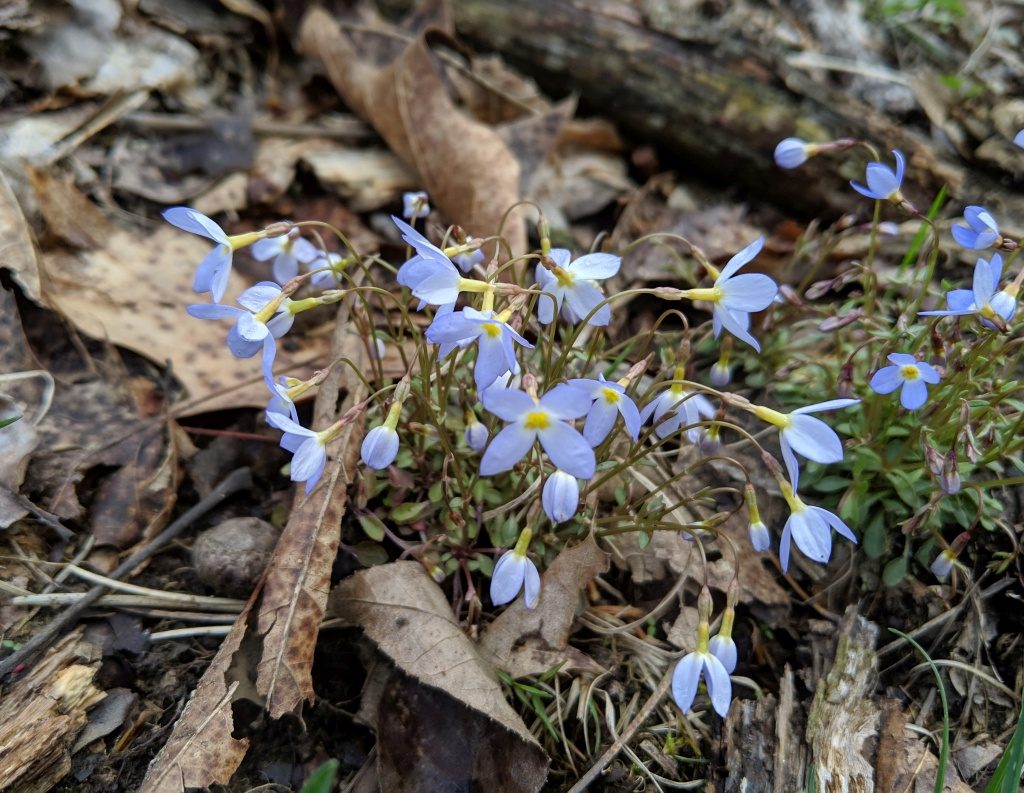
20 April 2019
Wildflowers are blooming, elms are setting seed, and some early trees are leafing out. Here’s a sampling of buds and blooms this week in southwestern Pennsylvania.
At Raccoon Wildflower Reserve on Tuesday our group found many flowers opening including bluets (above) and early saxifrage (below). Our complete list is at the end.
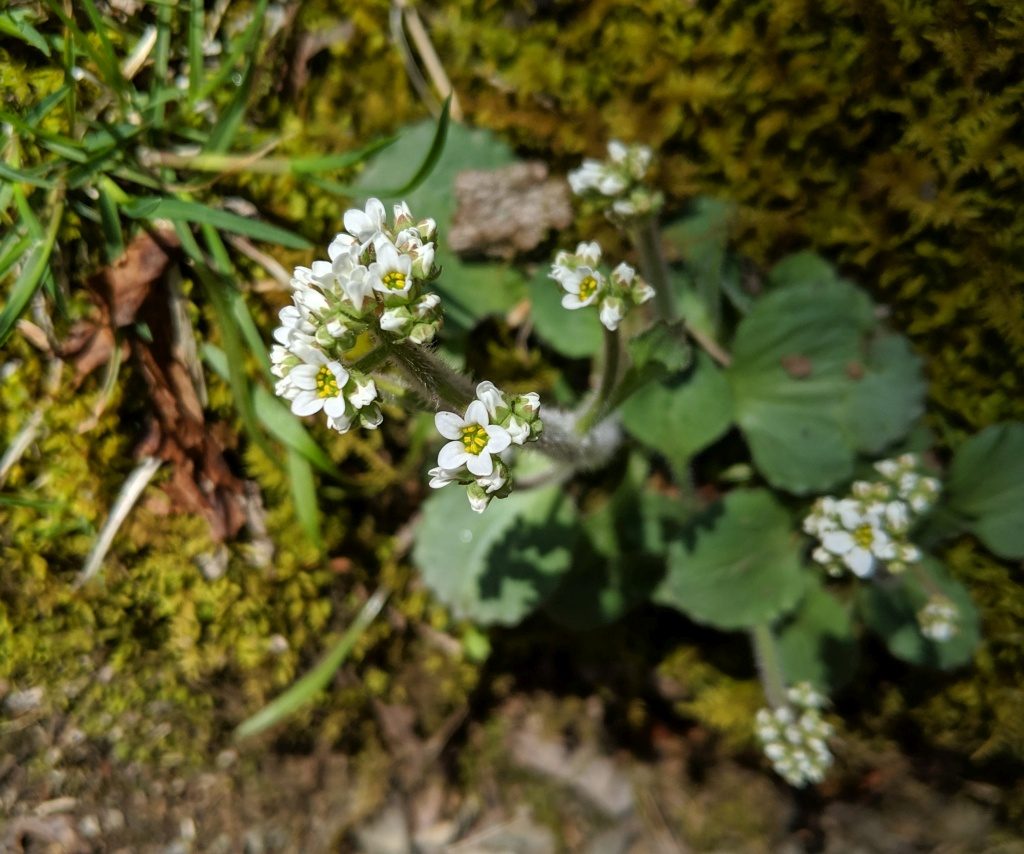
The trail at Racoon Wildflower Reserve was littered with the tips of sugar maple branches, chiseled off by squirrels. These Acer saccharum buds are opening to reveal new flowers.
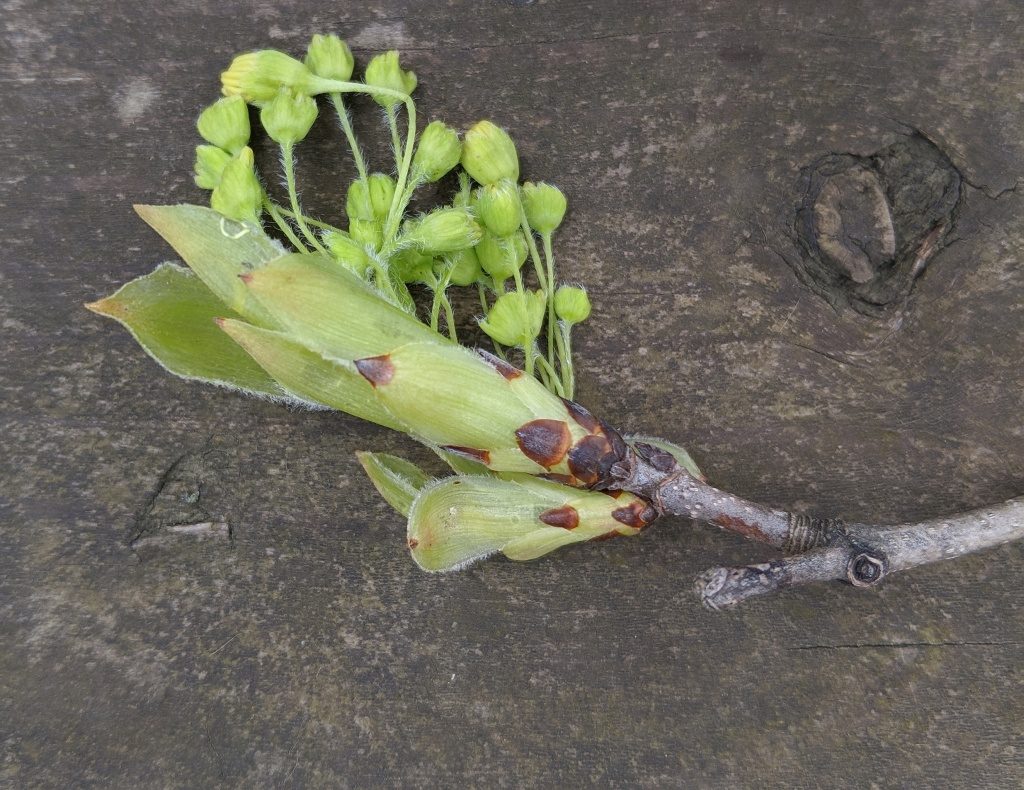
Meanwhile in the City where it’s warmer …
This spruce in Shadyside was flowering, too. The pink buds will become cones.
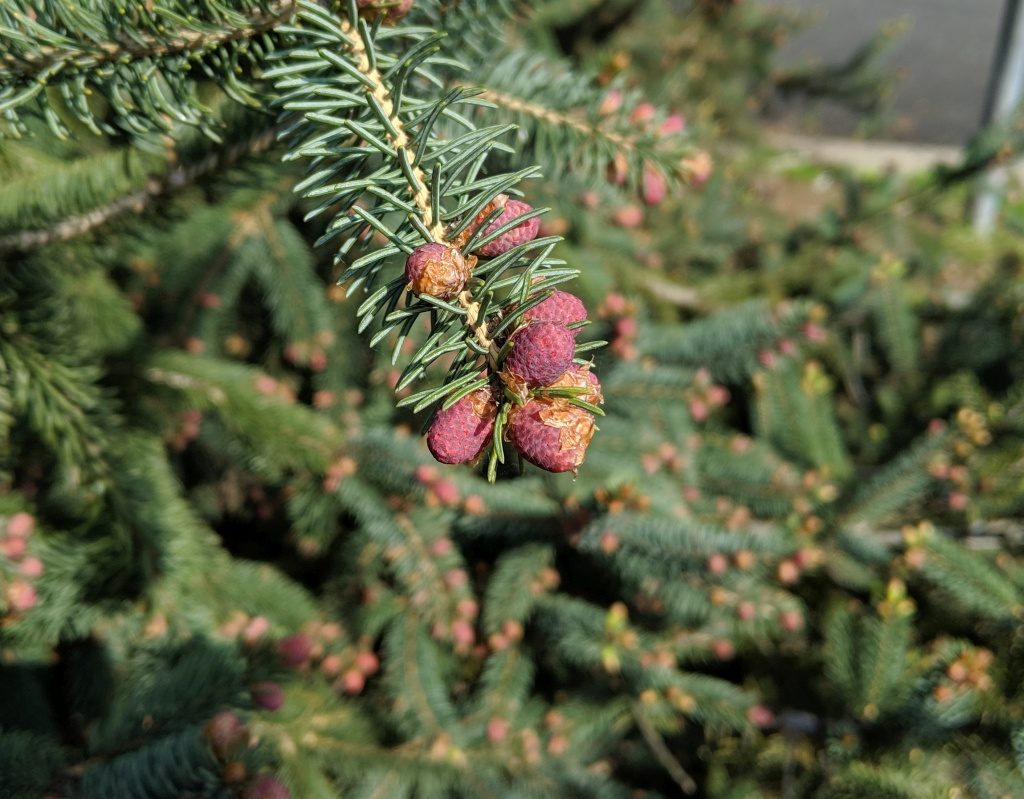
American elms (Ulmus americana) have already set seed. You can tell this is an American (not slippery) elm because the samaras are deeply notched.
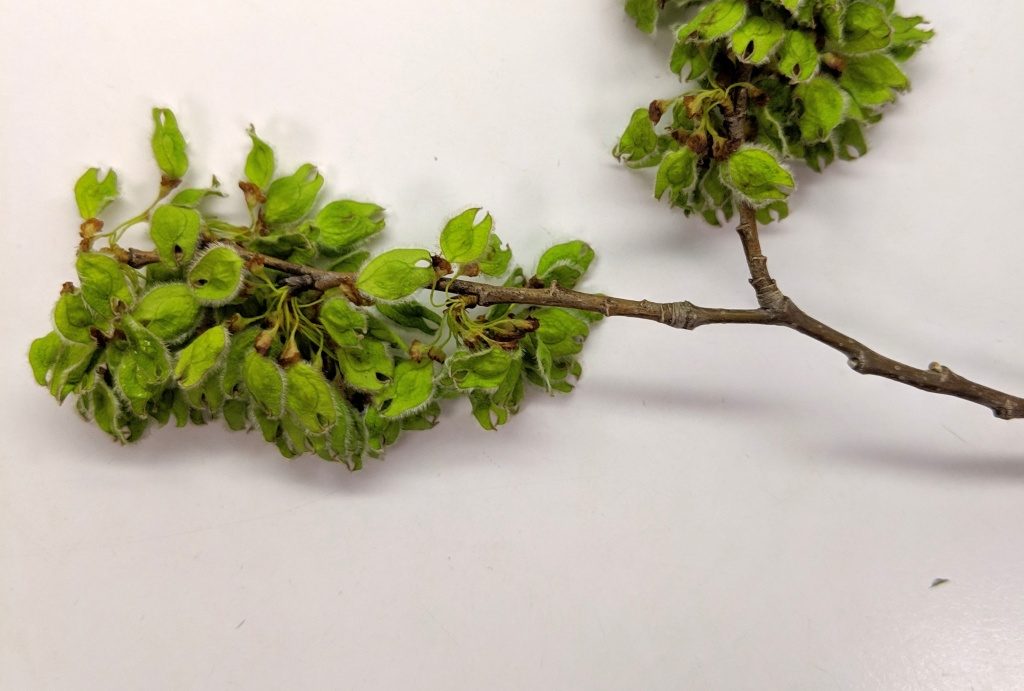
In Schenley Park, invasive Norway maples (Acer platanoides) are leafing out.
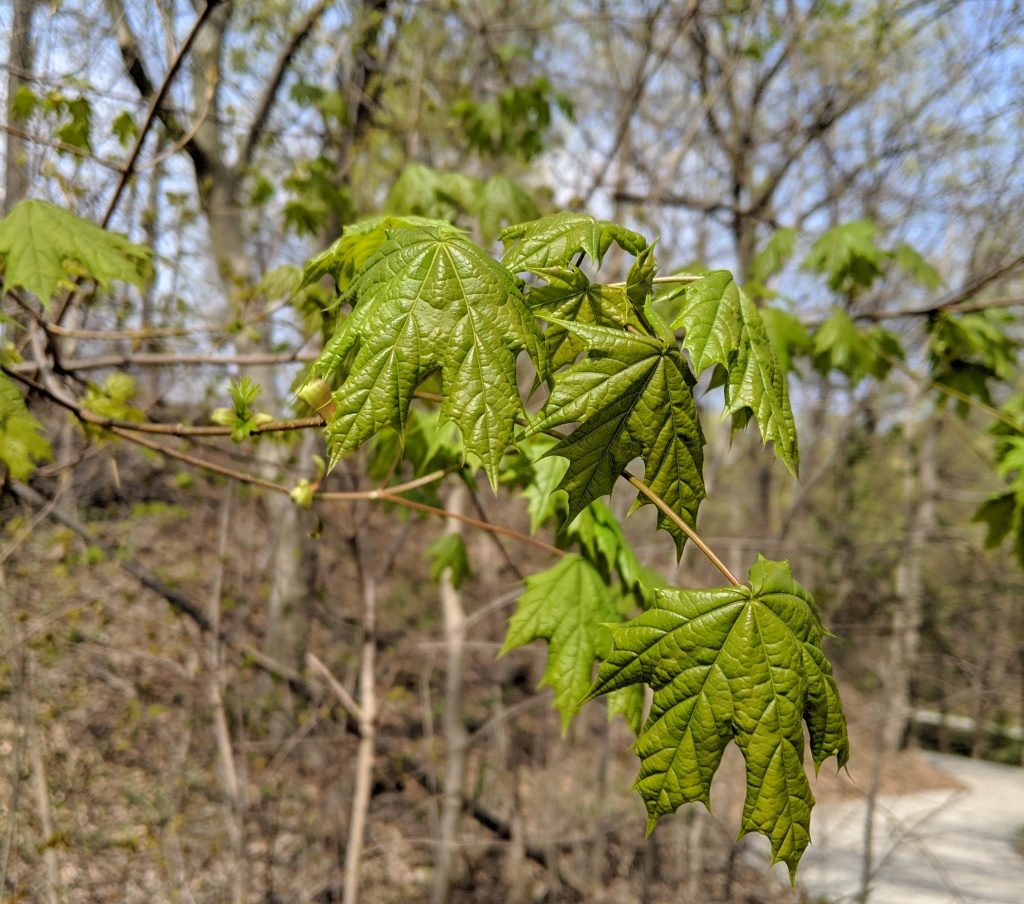
Spend time outdoors this weekend and see what’s blooming near you.
Here’s are list of flowers seen at Raccoon Wildflower Reserve on Tuesday 16 April 2019, in no particular order. Many flowers were only beginning to open. By now they’ll be in full bloom.
- Bluets (Houstonia caerulea), shown above
- Early saxifrage (Micranthes virginiensis), shown below
- Spring beauty (Claytonia virginica)
- Harbinger of spring (Erigenia bulbosa)
- Wild geranium (Geranium maculatum)
- Large-flowered trillium (Trillium grandiflorum)
- Toadshade or Sessile trillium (Trillium sessile)
- Blue cohosh (Caulophyllum thalictroides)
- Small-flowered crowfoot (Ranunculus micranthus)
- Trout lily (Erythronium americanum), the yellow one
- Spring cress (Cardamine bulbosa)
- Blue violet (Viola sororia)
- Yellow violets (did not identify the species)
- Cutleaf toothwort (Cardamine concatenata)
- Golden ragwort (Packera aurea)
- Smooth rock cress (Boechera laevigata) This plant looks weedy but has its charms.
- Wild blue phlox (Phlox divaricata) Not open on Tuesday but will be blooming now.
(photos by Kate St. John)
Wonderful photos! Thank you for taking them and identifying them. Spring is my favorite time of year.
Thanks, also, for yesterday’s timely reminder about how dangerous Easter Lilies are to cats.
I love bluets. The first house we owned had 9 acres of woods on the property, and we had a huge patch of bluets in the lawn behind our house, which provided a great color burst at the beginning of spring. I think they are what got me so interested in native plants, because I didn’t know what they were, and that got me on the path to getting my native plant certificate from Phipps and getting out into the woods looking for native flowers wherever I go.
Mary Ann, that’s such a nice story. I like that Bluets are also called Quaker Ladies or “Innocence.”